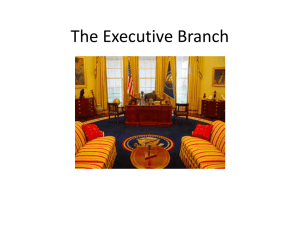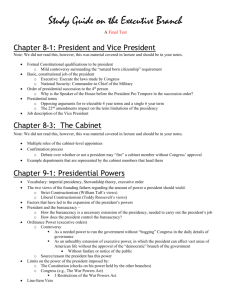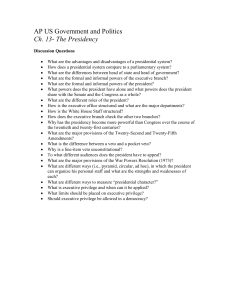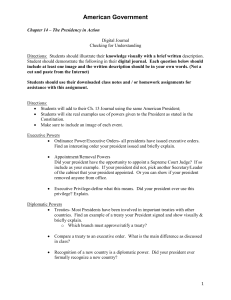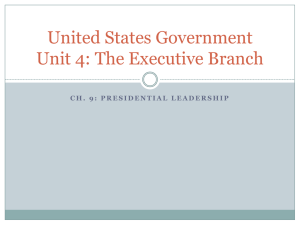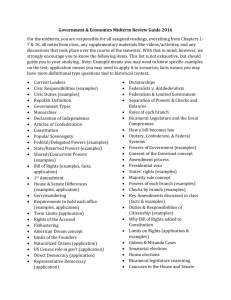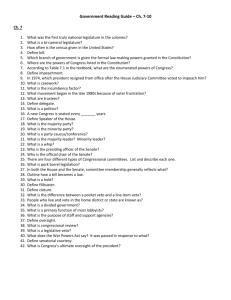Presidency in Action: Chapter 14 Study Guide
advertisement
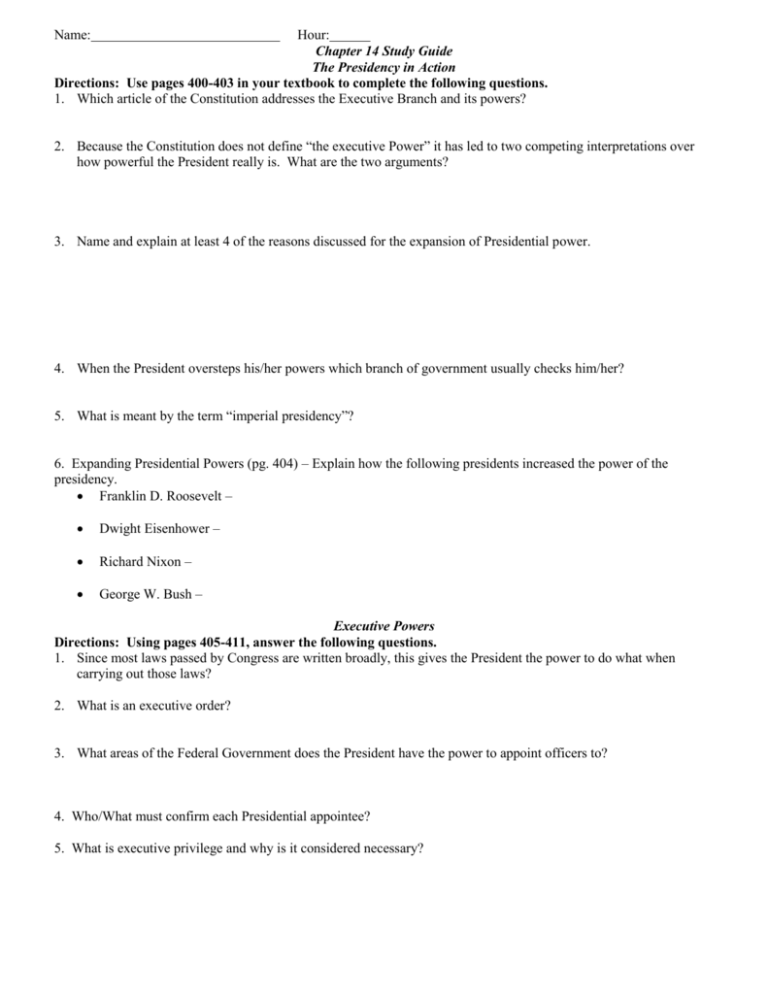
Name: Hour: Chapter 14 Study Guide The Presidency in Action Directions: Use pages 400-403 in your textbook to complete the following questions. 1. Which article of the Constitution addresses the Executive Branch and its powers? 2. Because the Constitution does not define “the executive Power” it has led to two competing interpretations over how powerful the President really is. What are the two arguments? 3. Name and explain at least 4 of the reasons discussed for the expansion of Presidential power. 4. When the President oversteps his/her powers which branch of government usually checks him/her? 5. What is meant by the term “imperial presidency”? 6. Expanding Presidential Powers (pg. 404) – Explain how the following presidents increased the power of the presidency. Franklin D. Roosevelt – Dwight Eisenhower – Richard Nixon – George W. Bush – Executive Powers Directions: Using pages 405-411, answer the following questions. 1. Since most laws passed by Congress are written broadly, this gives the President the power to do what when carrying out those laws? 2. What is an executive order? 3. What areas of the Federal Government does the President have the power to appoint officers to? 4. Who/What must confirm each Presidential appointee? 5. What is executive privilege and why is it considered necessary? 6. Read “What are the Limits on Executive Privilege?” on pg. 410-411. Should the President have the right to keep all communications with advisors private? Why or why not? Diplomatic & Military Powers Directions: Using pages 412-416, answer the following questions. 1. How are treaties and executive agreements different? 2. While a president can formally recognize the diplomats of another sovereign state, what can a president do if they want to show their displeasure with another country and their diplomats? 3. When is the last time Congress officially declared war? 4. The War Powers Resolution states that the President can commit American military forces to combat in what three cases? Legislative & Judicial Powers Directions: Using pages 417-421, answer the following questions. 1. When it comes to making laws, the President chief job is to do what (hint: Not Veto)? 2. If a president vetos a bill, what must Congress do to override it? 3. What is the difference between a pocket veto and line-item veto? Which one is a power the President does NOT have? 5. Signing statements are used to direct the manner in which a new law is to be enforced. How has it been used as a form of veto by past Presidents? 6. Define these four judicial powers of the President: Reprieve – Pardon – Commutation – Amnesty –


